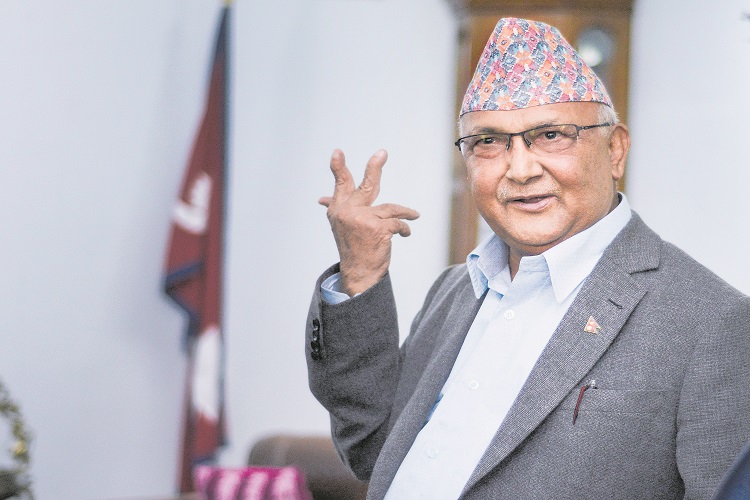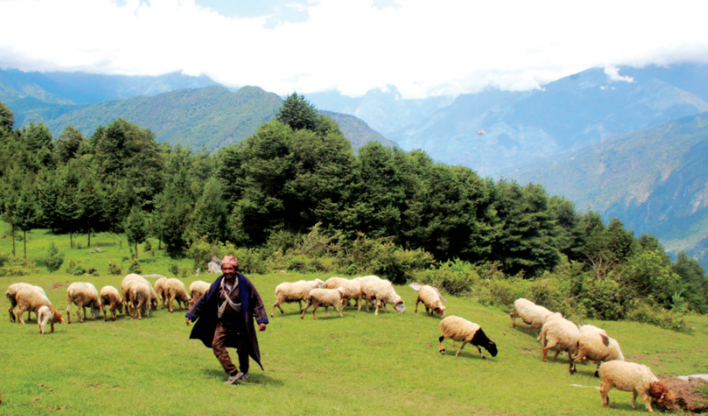latest News
Sunil Paudel found guilty in National Payment Gateway case
The then Deputy Director at the National Information Technology Center Sunil Paudel has been found guilty in the National Payment Gateway case.
A joint bench of Special Court Chairman Tek Narayan Kunwar and member Murari Bahadur Shrestha, however, has given cleanchi…
1 days ago
Province governments are being formed in an unconstitutional way: Congress
The Nepali Congress has said that the governments in Lumbini and Sudurpaschim Provinces were formed in an unconstitutional way.
1 days ago
Book ‘Kathmandu Chronicle: Reclaiming India-Nepal Relations’ brings to light many stories of Nepal-India relations
A new book titled ‘Kathmandu Chronicle: Reclaiming India-Nepal Relations’ will cover in depth significant aspects of Nepal’s democratic movements, its transition from an absolute monarchy to a federal democratic republic and from a Hindu state to a secular one, the Maoist insurgency, framing of a new constitution, its foreign policy choices, China expanding footprint—and m…
UAE shatter Nepal’s Asia Cup dream
Nepal’s dream of playing in the Asia Cup has been shattered for the second time. In the semi-finals of the ACC Premier Cup today, the UAE defeated Nepal by six wickets. Nepal’s leading batsmen could not perform well in front of the defending champion. The UAE achieved the target of 120 runs set by Nepal in 17. 2 over losing four wickets. Alishan Sarafu scored unbeaten 55 r…
Over 400, 000 tourists visited Mustang by road last year
Over 400, 000 tourists visited Mustang by road from April 14, 2023 to April 12, 2024, according to data with the Ghasa police station located on the transit point to Myagdi-Mustang. The statistics show that 414, 280 domestic and foreign tourists visited Mustang during that period. The number of domestic visitors entering Mustang via road is 335, 466, including 220, 724 men and 114, 742 wome…
Fertilizer being transported to Kathmandu from Tatopani Customs after 11 months
Chemical fertilizer imported from China is being transported to Kathmandu from Tatopani Customs Office. The fertilizer, which was stored in a warehouse for the past 11 months, is being transported to Kathmandu after Trans Silk, the company getting contract to import fertilizer, completed the necessary process. According to the Tatopani Customs Office, a total 3,500 tons of chemical fertiliz…
The chauffeur of last journeys
More than a decade ago, it would be news when coffins arrived at Tribhuvan International Airport on the cargo hold of airliners, bearing migrant workers who had died in the Gulf or Malaysia. The plywood boxes would be carried by grieving relatives to Aryaghat, the bodies in plastic sheeting unwrapped for cremation. The numbers escalated from the occasional coffin to two, three, then several a …
trending news
Lies, damn lies and digital media
In today’s digital age, misinformation doesn’t just distort reality; it distorts justice, tarnishes reputations and erodes trust in institutions. Let’s delve into a poignant example illustrating the devastating impact of false information on society. It was a tragic day when a young girl was found dead by hanging at her school in Chitwan. As police initiated their investigation, her family made a shocking claim to the media, alleging that she was murdered by individuals from the school after being subjected to rape. This assertion swiftly gained traction, spreading like wildfire across social and digital media platforms. Without waiting for the results of the official investigation or medical reports, the public embraced the narrative of the girl's death as a rape case orchestrated by the school administration. Despite subsequent medical and police reports disproving the rape allegation, the damage was done. The initial misinformation had already stained the reputations of the school and law enforcement, perpetuating a false belief among the majority of the populace. Tragically, this isn't an isolated incident. Consider the case of political leader Gagan Thapa, falsely accused of misusing funds intended for a GOAT farm project by PACT Nepal. Despite the organization's public clarification that no funds were mishandled by Thapa, opposing parties and social media activists continued to spread misleading content, tarnishing his reputation. These examples underscore a broader societal issue exacerbated by the proliferation of digital media and the lack of critical thinking skills. With internet penetration on the rise in Nepal, there’s a pressing need for education on media literacy and fact-checking. Unfortunately, the government has failed to address this challenge, with even leaders engaging in the dissemination of falsehoods for personal or political gain. In an era where misinformation spreads faster than truth, it’s imperative that we equip ourselves with the tools to discern fact from fiction. Failure to do so not only undermines our collective intelligence but also threatens the very foundations of our society. It’s time to confront this digital epidemic before it irreparably damages our minds and communities. In examining the spread of false information in our society, let's delve into another compelling example: The case of Durga Prasai, a prominent medical businessman. Prasai has leveled numerous accusations against banking and financial institutions, as well as against a particular business community. This instance sheds light on how digital media not only operates on false information but also actively contributes to the destruction of our societal fabric. Comparing this case with the previous examples underscores the multifaceted nature of misinformation’s impact. In the first scenario, false information propagated by the family of the deceased girl was mistakenly consumed as truth by the public. Conversely, in the case of Gagan Thapa, the media wrongly portrayed him as guilty, yet opposition parties and social media users accepted this false narrative as reality. Now, consider the situation involving Durga Prasai. Despite the presence of regulatory bodies like the Nepal Rastra Bank (NRB) tasked with auditing and overseeing banking institutions, Prasai’s allegations hold more sway in the eyes of the public than the assurances of the NRB governor. This phenomenon highlights a disturbing trend: The erosion of trust in established institutions and the elevation of individual voices, even when based on unsubstantiated claims. The ramifications of this trend are profound and far-reaching. If left unchecked, the proliferation of false information threatens to undermine the very foundations of our society and political system. As trust in institutions wanes and individuals are increasingly swayed by unverified claims, the fabric of governance is weakened, leaving room for manipulation and exploitation. In confronting this challenge, we must prioritize media literacy, critical thinking, and accountability. Empowering individuals to discern fact from fiction and holding purveyors of false information to account are essential steps in safeguarding our society’s future. Failure to do so risks perpetuating a cycle of misinformation that corrodes trust, distorts reality and undermines the democratic principles upon which our society is built. It’s imperative that we act decisively to stem the tide of misinformation before it irreparably damages our collective well-being. While reflecting on the evolution of media and its impact on society, we must acknowledge past instances where misinformation led to grave consequences. Cases like Srisha Karki’s, Anuja Baniya’s, and Rasendra Bhattrai’s are poignant reminders of the power and responsibility wielded by the media. In the past, accountable media outlets would promptly retract false information and issue apologies when mistakes were made. There was a sense of responsibility and accountability that ensured the integrity of reporting. However, in today’s digital landscape, the proliferation of digital devices has given rise to a new breed of threats. Anyone with a smartphone can capture and manipulate images and videos to fabricate damaging narratives. The consequences of such actions are severe: Individuals find themselves at the mercy of viral misinformation, their reputations tarnished irreparably before they can even respond. Who bears the responsibility for the damage inflicted upon the public image of these individuals? Can they ever fully restore their tarnished reputations in the eyes of society? The wounds inflicted by social media’s weapons of misinformation cannot simply be healed with time. Social media has emerged as a potent weapon in the digital age, capable of inflicting harm without the need for physical violence. Moreover, alongside misinformation, cybercrime rates are on the rise, as reported by the Nepal Police. The younger generation, deeply entrenched in the digital world, often uncritically consumes information without verifying its authenticity. The lack of a robust fact-checking system in our educational curriculum further exacerbates the issue, leaving individuals vulnerable to manipulation and exploitation. As we navigate this digital era fraught with misinformation and cyber threats, it’s imperative that we bolster media literacy efforts and integrate fact-checking mechanisms into our education system. Only by empowering individuals to critically evaluate information can we hope to mitigate the damaging effects of misinformation and safeguard the integrity of our society. Views are personal
An assessment of Nepal’s investment climate
Despite political and policy uncertainty, the Nepal government’s decision to organize the ‘Third Investment Conference’ (TIC) on April 28-29 to attract foreign investment is a welcome step. Major issues/obstacles to such investment remain unaddressed amid a change of guard at Singhadurbar, including the ascension of a new finance minister. To make TIC successful is indeed a major challenge, but it is heartening to find the new finance minister committed to the cause. This article will analyze major issues related to investment and prescribe practical solutions expected to play a crucial role in making the conference successful. A paltry FDI Investment, which helps to produce and reproduce goods and services, plays a pivotal role in national economic development. Despite different kinds of investment like public/private, domestic/foreign investment, the focus of this article is on private and foreign investment, especially foreign direct investment (FDI). For rapid economic development and growth, Nepal needs at least Rs 500bn in annual additional investment. Domestic investment alone will not be enough to fill this gap, so FDI is necessary. Due to the lack of a conducive investment climate, ratio of real fixed investment (total fixed capital formation) to GDP has plunged from 34 percent (which should be around 60 percent, ideally) to 25 percent in a five-year period, whereas the share of total fixed investment of the private sector has gone down from 28 percent to 25 percent. Over the last 30 years (up to the fiscal 2023-24), FDI amounted to Rs 265bn with the average annual increment of a paltry Rs 8.5bn, marked by a receding flow in recent years. In terms of global FDI flow, Nepal’s position is pitiable, registering a 66 percent decline last year and standing shakily at the 6th position in South Asia, as the NRB Survey Report on FDI Flows in South Asia, 2021-22 shows. It is quite discouraging to note that FDI outflow is greater than its inflow. Policy uncertainty and inconsistency is a major hindrance to both domestic as well as FDI. For example, the current government under Maoist leader Prime Minister Dahal is venturing into an undesirable sector by allowing the Nepali Army to run the already-privatized Hetauda Textile Factory, undermining the private sector (TPS) that contributes around 80 percent to the national economy. All this comes even as foreign investors remain quite afraid of pro-socialist provisions of the current constitution, including on the labor rights front. Capital flight Worryingly, the private sector is diverting investment to a low-risk, high-profit trading sector at the expense of the industrial sector. This is not an overnight development, though. For several years, this sector had been urging the government to create a conducive environment for industrial investment in Nepal by amending relevant laws and enacting more than two dozen acts/regulations, to little avail. Instances of strikes and donation terror—the practice of seeking donations by flexing muscles—have gone down, but strong labor laws are still spoiling the investment climate. Notwithstanding a one-door policy on investment, there practically are three doors—the line ministry, the subordinate department and the Investment Board. Then there are infrastructural problems like load-shedding in the industrial sector, local communities’ grievances/concerns and political problems that create hurdles in the establishment of industries/factories. All these factors are also discouraging Nepali investors and triggering huge capital flight, formally and informally. In such a situation, how can Nepal attract foreign investment? A great dilemma Globally, the control regime has become obsolete, thanks to a liberal economic policy adopted in the late 80s and 90s. Our neighbors—communist China and democratic India—adopted liberal economic policies and entered an era of economic growth and prosperity. In the case of Nepal and several other developing countries, some problems have appeared in the execution of liberal economic policy due to a higher degree of liberalization than their respective regulatory/supervisory capacities. In our case, major leftwing parties have not so far committed to the liberal policy adopted 30 years ago, the need for FDI and a stronger role of the private sector for economic development. This is a great dilemma. The author is an economist
Is Nepal really a ‘yam between two boulders’?
As Nepal is soon going to approach the milestone of graduating from the list of Least Developed Countries (LDCs), there is an urgency to develop a comprehensive foreign policy that goes beyond the traditional approach of the so-called “yam between two boulders”. Frankly speaking, I always struggled to understand the intrinsic meaning of the reasoning behind it. Why should a nation like Nepal that, objectively speaking, is not a tiny geographical spot on the global map, reduce itself to a binary thinking that is dictated by an over reference towards India and China? Perhaps in the past, this thinking could have been justified. In the realm of geopolitics and international relations, there is no room for naïveté and it is impossible for a country like Nepal not to take into consideration the strategic interest of its two gigantic neighbors. But this isn’t the last time that Nepal forged its own strategic interests beyond those of China, India or the United States of America. But what would take for Nepal to be able to formulate a future forward, confident foreign policy? The spirit of amity and cooperation with all the nations is a key pillar of the country’s foreign policy. Together with the successful (though not fully completed) transition from the civil conflict, and the creation of a federal democracy, this internationalist attitude, should represent the “north star” of Nepal’s foreign policy. Moreover, Nepal’s incredible diversity in cultures and traditions, magnificent landscapes and cordial nature of its people could also help its ways to project itself to the world. But how to concretely leverage these sacrosanct principles and unique endowed features of the country rhetoric? Nepal will soon do away with the “least” developed nation label that, from the marketing and branding point of view, has been disastrous, especially if you want to bring in international investors. This development will require a reset in the way foreign policy is framed because, between now and the next few years, Nepal will have a unique opportunity to rebrand itself and not only in terms of being an attractive investment destination. Perhaps, reminding ourselves that foreign policy is a mirror of national politics and the way of governing a nation, could be a way to start a reflection on the links between national and foreign policies. If national politics changes for the better and becomes more transparent and effective, then the foreign policy of the nation can, consequently, also get more strategic and ambitious so that, finally, Nepal could get rid of “yam between two boulders” thinking. Foreign policy should be instrumental in this phase of national development but a lot will depend on how politicians perform and behave at home. The country is trying to turn from being a net recipient of international aid to being a net recipient of foreign investments. A vision, albeit not yet perfect, is being formulated in this regard. There is an overarching aspiration to attract business even though, for this to happen, it might mean doing away with some convenient “double standards” like the existing limitations in the shares that a foreign investor can own. In addition, being successful at attracting investments won’t only depend on running a successful summit or in putting in place better rules that incentivise investors. Instead, what will count will be creating a favorable investor climate thanks to better policies that enhance good governance in the realm of the economy, including serious interventions in the fight against cartels and corruption. In addition, unless the country manages its delivery of services better, especially in the field of education and health, it will hardly succeed at becoming an investors’ magnet. For example, there have been discussions about Nepal becoming a medical or educational hub. Knowing the quality of the expertise and knowhow within the country, I am confident that it is possible. There are already enough best practices and the more the country attracts back its citizens who had decided to emigrate in places like Australia and the USA, the better. It would be even conceivable to imagine, in the near future, “Nepal Educational Expos” around the world with the best national educational institutions attracting students, starting from continents that the country has never, so far, even remotely imagined engaging with. But can Nepal become such a hub without the right foundations? Fixing its foundations, improving its education system at the grassroots and raising the current level of public education would be instrumental in promoting a “whole of nation” approach rather than few best practices amid a sea of mediocrity or worse. What about starting to think about the first ever investment-focused mission of a Nepali Prime Minister to emerging nations in Central Asia or even to Africa and Latin America? An official state delegation could discuss bilateral cooperation, including investments and the selling of some of the country’s unique proposition, tourism and of course its education and health institutions. A substantial effort at enhancing good governance would, consequently, also be instrumental in propelling a foreign policy capable of shaping a new narrative. The story of a country with many imperfections and unsolved challenges but also a nation that is ambitious and attempting at building a more just and developed society that can attract high human capital investments rather than low-cost manufacturing. Good governance could also enable and facilitate innovative policy and contributions that Nepal can offer to the world, all ideas that its diplomacy could amplify and promote. If you read the speeches of every single Prime Minister in the international forums, it is always the same leitmotif, starting from the usual (though correct) story that the country is among the most at risk of climate warming. It is not that Nepal must stop bringing forward its legitimate grievances but it can do this differently with practical propositions, from adaptation to climate financing. These are just some examples where Nepal could contribute not as a “bagger” but as promoter of solutions to some of the key global challenges. But we need a non-partisan foreign policy vision of at least five years, a very pragmatic document that does not waste time in pleasing the neighborhood or other super powers but rather is purposefully fit to serve the nation’s new development aspirations. Formulating this vision document will compel the policy-makers to truly align national priorities with its foreign policy ones. This would help Nepal start thinking and not only in terms of foreign policy, from the perspective of being a middle-income nation even if it is, at the moment, just an aspiring one. But it remains essential to fix the governance first. The nation needs to really turn its mediocre at the best governance into a “good” one so that it can be in a position to truly assert its own interests, no matter what others might expect from it. This is a real chance for Nepal to reach the point of thinking beyond what its powerful neighbors want and need from it. Otherwise, we will continue to read about this absurd but sadly true story that Nepal is just a “yam between two boulders”. The author is the co-founder of ENGAGE and The Good Leadership. Views are personal
Presumption of innocence and Nepali attitude
The presumption of innocence is the greatest shield ever to have been provided to an accused in criminal lawsuits. It is a vital aspect of the criminal legal system around the world. It states that every accused is ‘innocent’ until proven guilty and the burden to prove their guilt lies with the prosecution i.e., the State. Whenever a person is arrested by the government for their alleged involvement in a crime, the government must collect all evidence to prove that person’s guilt in an independent, impartial, and competent court, beyond reasonable doubt. Until that happens, the arrested individual cannot be deemed to be a ‘criminal.’ The right to be treated as innocent until proven guilty is a fundamental constitutional right and it is protected in Article 20(5) of the Constitution. Similarly, Section 12 of the National Penal Code (Act), 2017 perpetuates the presumption of innocence in criminal lawsuits. This legal notion has become the standard of the ‘civilized’ legal system and it has enabled States to perpetuate their obligations to protect, promote and fulfill human rights of their citizens. The US case Coffin v. United States (1895) posited that the notion of presumption of innocence lied at the foundation of the administration of criminal law. Similarly, the case of Rabindra Bhattarai v His Majesty’s Government of Nepal, Nepal Law Magazine 2055 (BS), Decision Number 6622 meticulously iterated the essence of this presumption and held that no person shall be deemed as a criminal merely based on an accusation. Thus, it is undoubtedly an elementary legal principle that helps to protect a civilian’s freedoms. What would happen if an accused were deemed guilty until proven innocent? The accused would have to collect evidence of their innocence with limited resources available to them. On the other hand, the court would be ready to convict them merely based on accusations. Therefore, it would be unscientific and contrary to people’s human and legal rights. How should an accused be treated? Theoretically, they must be granted the same respect as that of unaccused individuals. Their fundamental rights must be protected by the State, and no person shall slander them or label them as ‘criminal’ until the court finds their guilt. But does society view such a person accordingly, with no biases at all? Does it comprehend easily that such a person is still a respected citizen and deserves no eccentric remarks until the court decides? One of the best ways to assess the social psychology of Nepali society is to skim through various social media and observe the comments and remarks people express in various criminal matters. We can fairly observe that most people are quick to judge the accused and label them as ‘criminals’ based on rumors and whims influenced by news headlines and incomplete details from case files. It is as if an individual instantly becomes a criminal the moment they are accused of committing a crime. But does it happen if the accused is rich, influential, and admired by many? The answer is generally ‘no’ and a recent example is how people (on social media) not only declared Sandeep Lamichhane (former captain of the Nepali cricket team) as innocent on a rape charge but also slandered the victim and perpetuated how ‘baseless’ the lawsuit was. To say that the entire nation was shocked would be an understatement. When he was released on bail in Jan 2023, a mass of people rushed to him to “celebrate” his release and many women were seen chanting his name as he left the court premises. What image of Nepali society does this “influence” paint? Why were people chanting his name knowing that the victim of rape was allegedly a minor? Why did they not think the cantillation of his name would directly attack the victim’s status and shake her belief in society and the justice system? One of the answers to this is rape myth acceptance. RMA refers to acceptance of prejudicial, stereotyped, and distorted beliefs about rape, rape victims and rapists. These are the false attitudes and beliefs about the crime, yet widely held to serve and even justify male sexual aggression especially against women. When news of rape is broadcast, people in the first instance ask questions like “Why was the woman with the man?”; “Was she wearing revealing clothes?”; “Was she provocative?”; “Why did she not come for help sooner?”; “Why would a successful man risk his life and career?” This attitude is not only prevalent in Nepal but also in countries all over the world. Due to RMA, many women tend to blame themselves and not bring the matter to light, let alone seek legal remedy. Patricia A. Resick in her journal article “The Psychological Impact of Rape” enumerated a wide range of problems faced by women such as fear, anxiety, PTSD, depression, sexual dysfunctions, issues with self-esteem, declined social adjustment and more. Yet many people in Nepali social media, in many instances, are quick to assassinate victims’ character. What could be the general ways to “fix” this attitude? Nepali society must understand that every accused has their fundamental rights intact until they are proven guilty by the court. Their rights to live with dignity, to freedom, to privacy, to health, to food, to housing and such, shall be respected. At the same time, if the accused is an influential personality, he or she shall not be celebrated or given a clean chit by the public. The people should let the law do its work and refrain from lionizing such individuals. They must think about the victim who is claiming that they were subjected to abhorrent injustice. To alleviate this attitude, the quickest short-term measure is to strengthen laws legislated to protect women. Courts play a crucial role in establishing and nourishing robust criminal jurisprudence in favor of women’s security and clarifying the idea of sexual consent. The more pragmatic the definition and boundaries of sexual crimes, the better social and legal understanding of sex crimes. This is also where strict monitoring of social media behavior comes into place. Nepal requires an upgrade in cyber laws to prevent online sexual misconducts. The best long-term measure would be to educate children from early ages to protect themselves, to call out for help in need, and to teach them the idea of consent. It would be beneficial if every workplace had a periodic mandatory anti-sexual harassment training to educate employees about respect and positive behavior. As time goes on, people must be cognizant about condemning lewd remarks on women through jokes, songs, and stereotypical narratives. If we could only adopt half of these measures, our society will be a safer place for women and girls. We could prevent numerous sex offenses and maintain a victim-centric attitude to make victims believe in social restoration. The author is student of BA LLB at Kathmandu School of Law
Investment Summit: How to attract FDI in Nepal?
An investment-friendly political and socio-economic environment is urgently needed in today’s Nepal. Foreign Direct Investment (FDI) and national private investors must be encouraged and supported by the friendly policies and programs of the Nepal government. Such policies and programs are necessary to increase the pace of economic development, achieve relevant Sustainable Development Goals (SDGs) and create concrete economic grounds for graduation from the LDC status in the year 2026. There is a high potential and possibility for such an investment-friendly atmosphere in Nepal. The lack of political willpower, interest, honesty and clear-cut policies and implementation programs are preventing the creation of such an atmosphere. FDI flow in S Asia Nepal is in the sixth position in South Asia regarding FDI inflow, just above Bhutan, according to World Bank data for 2022. FDI inflow was just $65m in 2022 Nepal, which is a 0.15 FDI-GDP ratio. The Maldives is on the top, having $722m in 2022, and the FDI-GDP ratio is 11.7. India was second, and Bangladesh was fourth that year. Bangladesh had $3,480m with a 0.75 FDI-GDP ratio in 2022, whereas India had $49,355m with a 1.44 FDI-GDP ratio in the same year. The 2024 data show India received $105.23bn whereas China received just $70.23bn. According to the same source, net FDI inflows to Nepal decreased by 4.9 percent to Rs 60bn in 2021-22. There is a significant gap between approved FDI and actual net FDI inflows in Nepal. Between 1995-96 and 2021-22, the total net FDI inflow stood at around 36.2 percent of total FDI approval. This is one of the weighty matters of concern for Nepal. Vietnam and Cambodia According to Vietnam’s Foreign Trade Agency, the country experienced a surge in FDI in January and February of 2024, recording an influx of over $4.29bn, marking a significant increase of 38.6 percent compared to the previous year. The major areas of FDI investment are Manufacturing, Services, Agriculture and Travel. Cambodia’s FDI registered a growth of 12.1 percent of the country’s nominal GDP in Dec 2022, while it stood at 12.9 percent in the previous year. The significant areas of FDI investment in Cambodia are agro-processing, electronics/machinery, health, industrial parts, infrastructure and green energy. Nepal’s failure Some of the reasons behind Nepal’s failure to attract FDI are as follows: Legal hurdles: Some Acts and Regulations responsible for this need to be immediately amended. For example, government itself has said Industrial Enterprise Act 2020, Foreign Investment and Technology Transfer Act 2019, Special Economic Zone Act 2016, Forest Act -2019, National Parks and Wildlife Protection Act 1973, Land Act 1964, Land Acquisition Act 1977, Environment Protection Act 2019, Electronic Transaction Act 2008, Civil Aviation Act 1959, Foreign Investment and Technology Transfer Regulation 2021 and Forest Regulation 2023 need to be revised. Also, some new Acts are needed to encourage the investors with mutual advantages and benefits with clear-cut policies from the point of license receiving to total facilities and support to be given and remittances (dividend) for return. Bureaucratic hurdles: Bribery, corruption and red-tape are the main hurdles here. Whether national or foreign investors, this is their main complaint and grievance. Our legal and executive decisions and discipline should be such that they penalize and discourage the corrupt actors. Political hurdle: We should be very fair and impartial, and it will be unfair to blame the bureaucrats alone. Our political circle is also tainted. Our politicians, bureaucrats and brokers have some kind of nexus through which they engage in corrupt practices and discourage investors. So, concerned government authorities and relevant agencies should pay attention here, and the culprits must be brought to justice. Instability: Lack of political instability, marked by frequent changes in government, is one of the important reasons behind the failure to attract FDI in Nepal. Investors want political stability and policy consistency, and they hardly invest in politically-unstable countries. The political parties of Nepal must pay serious attention to this matter. Facilities and taxation: FDI calls for a clear-cut taxation policy that is congenial to them and that provides information to them about facilities they are entitled to in a transparent manner. Our taxation policy should be distinctly clear and investment-friendly. We should provide them with all basic facilities that good plants and industries need. Why should we not offer them a special industrial zone like other countries by taking a cue from this saying: Facilities attract and invite capital and capitalists? Trade union and exit plan: The FDI needs a transparent, solid, stable and investment-friendly labor policy. Foreign investors do not accept workers’ strikes and other forms of disturbances in the industries. They do not accept politics and politically-motivated activities within industrial areas. Does the government have a political will to address these concerns? Foreign investors are also very much concerned about their exit plans. They want to take their profit safely and smoothly back to their countries. They are also apprehensive about the principal amount they invest in. Our legal system, executive decisions and practices should be amicable and supportive of their exit plan. Proposed areas: Our priority and proposed area must be clear and solid to attract FDI. As per the need and potential of Nepal, agriculture, tourism, hydro, connectivity, education, health, IT, and agro and forest-based industries are the appropriate areas for FDI investment in Nepal. Learning lessons: In-depth studies are necessary to find the reasons behind Nepal’s failure to attract FDI. Serious studies of countries that have managed to bring in FDI big time, especially on the facilities and incentives they provide to foreign investors, can show Nepal the way forward when it comes to attracting FDI. Conclusion In conclusion, Nepal urgently requires a conducive environment for investment to accelerate economic growth and achieve SDGs. Legal, bureaucratic and political hurdles, along with instability and unclear policies, deter FDI inflows. To address this, Nepal must enact investor-friendly laws, combat corruption, ensure political stability, offer transparent taxation policies, provide facilities and address labor issues. Learning from successful FDI attractors like India, Bangladesh, Vietnam and Cambodia, Nepal should focus on sectors like agriculture, tourism, hydro, connectivity, education, health, IT and agroforestry, at a time when the country is gearing up to organize the Third Investment Summit.
Katchatheevu: BJP’s political masterstroke
India will go to polls this month to elect a government for the next five-years. The ruling Bharatiya Janata Party (BJP)-led National Democratic Alliance (NDA) is seeking a third consecutive victory under the leadership of Prime Minister Narendra Modi with a bigger and broader mandate this time. In a politically charged atmosphere, blame games among and between political parties are common. In a surprise entry, Prime Minister Modi raised the issue of Katchatheevu island, a past territorial dispute between India and Sri Lanka resolved in 1974 by the two governments through an understanding. For an Indian electorate, the border dispute with Pakistan and China has made more sense in raising a nationalistic mood in the past. Still, Katchatheevu is a political masterstroke by the BJP targeting the electorate in the state of Tamil Nadu who continue to feel the ire of the 1974 agreement. In a recent tweet, Prime Minister Modi took a dig at the opposition party, Indian National Congress (INC), accusing it of weakening India’s unity and interests by giving away Katchatheevu island to Sri Lanka in 1974. Whether ceding Katchatheevu was a shortsighted move by the then firebrand Prime Minister Indira Gandhi, under whose leadership India had defeated Pakistan in 1971, the BJP leaves no stone unturned in framing it as one aimed at political gains. The fishermen from both sides used to access an island called Katchatheevu in the narrow Palk Strait between Sri Lanka’s northern district of Jaffna and India’s southern state, Tamil Nadu, to dry their nets and replenishment activities. Historically, Katchatheevu fell under British rule in India and became a contested territory post-Indian independence. Following long-held negotiations and existing goodwill, the then Indian PM Gandhi and her Sri Lankan counterpart Sirimavo Bandaranaike signed an agreement in 1974 to demarcate the maritime boundary where Katchatheevu ceded to Sri Lanka. Considering the resource richness of the waters, Sri Lanka soon asserted its sovereign rights over the island and prevented Indian fishermen from accessing it. It was against India’s expectations that Sri Lanka would consider cultural and historical aspects and allow Indian fishermen to access the territory. Katchatheevu has raised regional sentiments in Tamil Nadu following the detention of 6,184 Indian fishermen and seizing of 1,175 fishing vessels in the last 20 years—as reported by Indian Foreign Minister S Jaishankar. He added that while previous governments ignored and used the issue for political purposes, BJP takes the fishermen’s issue seriously. By selecting BJP headquarters to hold a press conference on a foreign policy matter, Foreign Minister S Jaishankar kept the matter under political ambit. He avoided making it the position of the government of India. The Sri Lankan foreign minister has responded, saying Sri Lanka does not intend to entertain further discussions on the matter. With BJP expecting to sprout its political clout in Tamil Nadu in the forthcoming elections against powerful regional parties, including ruling Dravida Munnetra Kazhagam (DMK)—an ally of the Congress India National Developmental Inclusive Alliance—it finds Katchatheevu as a solid point to start its campaign. Away from the politics of Katchatheevu, small island and island countries are finding prominence in India’s geostrategic thinking today, especially after China’s expansionist entry into the Indo-Pacific. China’s presence in the regional waters became more prominent after Sri Lanka leased its Hambantota Port to China for 99 years. Also, with a China-friendly government in the Maldives, India needs allies to address the China challenge. Strategic consideration to find like-minded allies to counter China resulted in the Quadrilateral Security Dialogue or QUAD—a diplomatic partnership between Australia, India, Japan and the United States, committing to supporting an open, stable and prosperous Indo-Pacific that is inclusive and resilient. While China makes little in QUAD’s black and white, the unsaid understanding among the QUAD members is attempting to resolve the China challenge. In developing its capabilities, India’s ambitions as a naval power in the Indo-Pacific and beyond are visible from its assertion as a ‘responsible naval power’. Recent rescue missions by the Indian Navy concentrating on combating piracy in the Gulf of Aden and the Arabian Sea have involved deploying guided missile cruisers, marine patrol aircraft and drones to monitor commercial shipping activity in the region. In conclusion, by raising the Katchatheevu issue, the BJP may have increased the political temperature in Tamil Nadu, but it has not affected India’s relations with Sri Lanka. If something comes up from Sri Lanka, India knows it’s manageable, especially after Delhi rescues it from the economic crisis. However, India’s signaling of its rising naval aspirations, including maritime security in the Indo-Pacific and beyond, must be seen from a broader lens of Delhi’s changing strategic geography.
PM Dahal, UML Chairman Oli hold talks
Prime Minister Pushpa Kamal Dahal and CPN-UML Chairman KP Sharma Oli held a meeting in Singha Durbar on Thursday. Oli had reac…
Lumbini Province Chief Minister Mahara expands Cabinet
Lumbini Province Chief Minister Jokh Bahadur Mahara expanded his Cabinet, inducting four ministers from CPN-UML, one from Nagarik Unmukti Party and o…
President Paudel appoints Shakya as NA member, Raya as Auditor General
President Ram Chandra Paudel on Thursday nominated Dr Anjana Shakya as a member of the National on the recommendation of the government. President…
Prioritize Nepal for adaptation funds, says Finance Minister Pun
Finance Minister Barshaman Pun has said that underdeveloped and Himalayan nations like Nepal should be prioritized for access to compensation, biodiv…
Harry Bhandari: An inspiring tale of Nepali immigrant in the US
Quick facts Born on 1 Oct 1977 in Parbat Went to Tribhuvan Secondary School, Parbat Graduated in PN Campus, Pokhara; post-grad in English literature from Tribhuvan University First elected to the Maryland House of Delegates in 2018 and has been a member of the House since Jan 2019 PhD from the University of Maryland, Baltimore County (UMBC) Husband to Sangita Baruwal Father to Ronix Bhandari and Salona Bhandari I began my early education at a public school establishe…
7 months ago
Baburam Bhattarai: An analysis on Nepal’s underdevelopment
Quick facts Born on 18 June 1954 in Gorkha Went to Amarjyoti Janata High School, Gorkha Graduated from Punjab University, Chandigarh, Post-grad from School of Planning and Architecture, New Delhi PhD in Regional development planning from Jawaharlal Nehru University Published doctoral thesis ‘The Nature of Underdevelopment and Regional Structure of Nepal: A Marxist Analysis’ in 2003 Husband of Hisila Yami Father to Manushi Yami Bhattarai I went to India in…
7 months ago
Sunil Babu Pant: A guardian of LGBTIQA+ community
Quick facts Born on June 1972 in Gorkha Went to Laxmi Secondary School, Gorkha Graduated in Computer Science from Ukraine and Belarus Became the member of first constituent assembly in 2008 Partner to Peter Neil I saw the oppression of gay men during my time in Minsk, Belarus, where I was studying for my master’s degree in computer science. The queer bashing, the poster…
Usha Nepal: An inspiration to every working woman
Quick facts Born in Mahottari, Nepal Went to Balika Secondary School, Biratnagar Received a Bachelor’s in Arts from Banaras Hindu University, India Received a Master’s degree through Colombo Plan Scholarship in Patna, India Studies Law from Tribhuvan University, Kathmandu Became the first female CDO in 1989 Being the first female Chief District Officer (CDO), whi…
Anupama Khunjeli: A trailblazer banker
Quick facts Born on 14 Nov 1970 in Kathmandu Went to St Mary’s High School, Lalitpur Graduated from Shanker Dev Campus; post-grad from Ace Institute of Management Joined banking sector in 1991 as a teller Wife of Dr Rabindra Khunjeli Mother to Swastika Khunjeli I have always had a competitive streak in me. I was into sports from a young age and I wanted to be an ath…
Capt Siddartha Jang Gurung: Aviation rescue specialist
Quick facts Born on 20 April 1975 in Lalitpur Went to Alperton High School, London, UK Completed flight course from Florida Flight Academy, US Started rescue flights from 1995 Husband of Sraddha Gurung Father to Devanshi Gurung and Shlok Jung Gurung I have been flying helicopters for 27 years now, and have a long experience of flying in the mountainous terrain of Nepal…
Bhuwan Chand: Born to perform
Quick facts Born on 14 June 1949, Kathmandu Went to Ratna Rajyalaxmi Campus, Pradashani Marg, Kathmandu Took a leading role in the first Nepali feature film ‘Aama’ in 1964 Wife to Michael Chand Mother to Sheela Chand, Sheetal Chand, and Shirush Chand I started my career in acting when I was merely four-five years old. Back then, we had no such thing as film acting. Nepal s…







































































































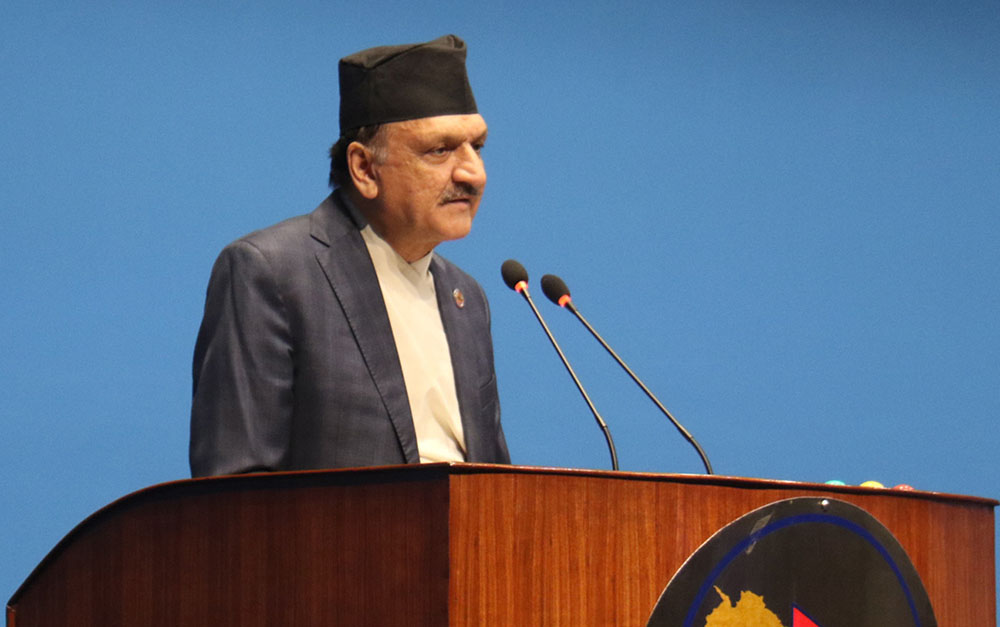
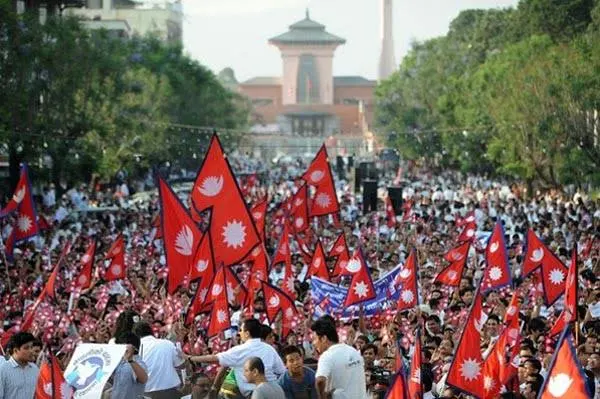
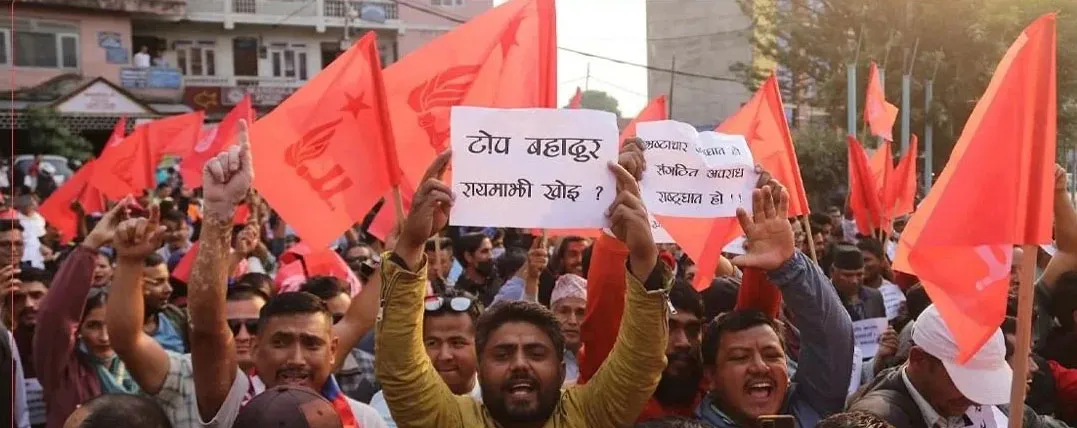
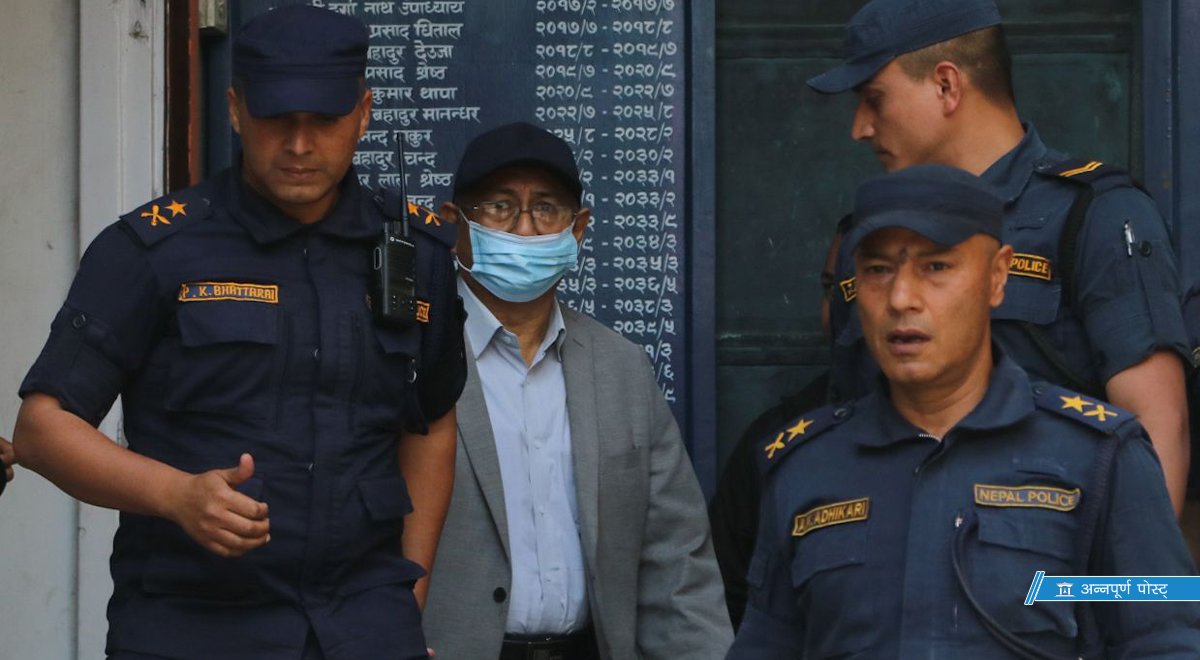


























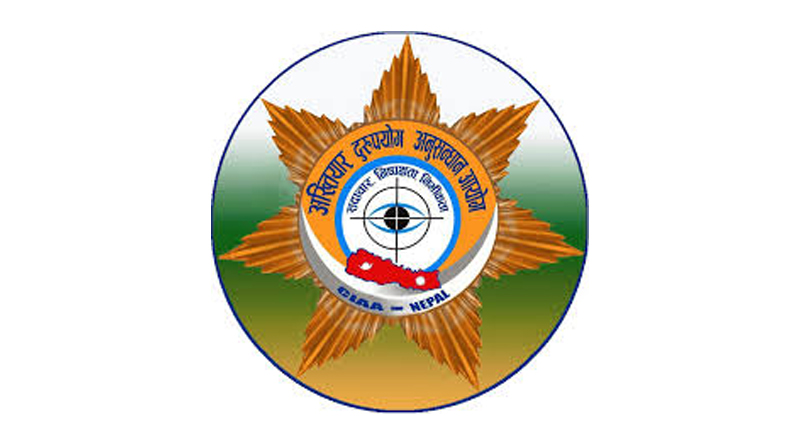

_20201022131432.jpg)








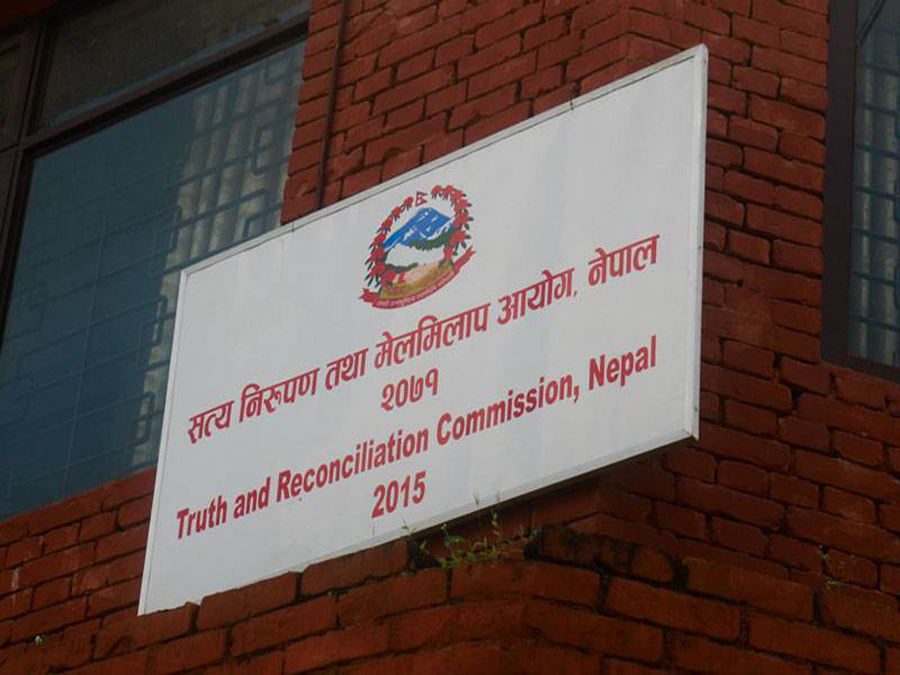





























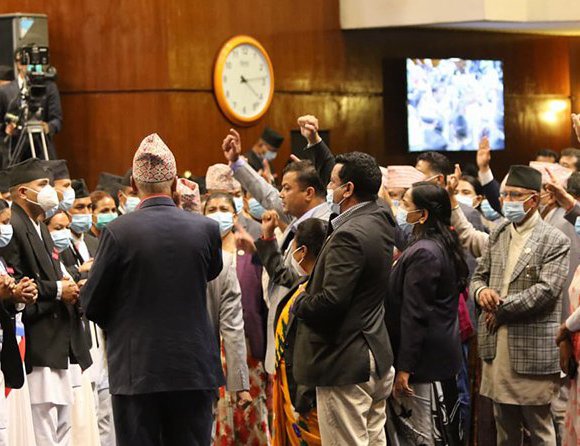

























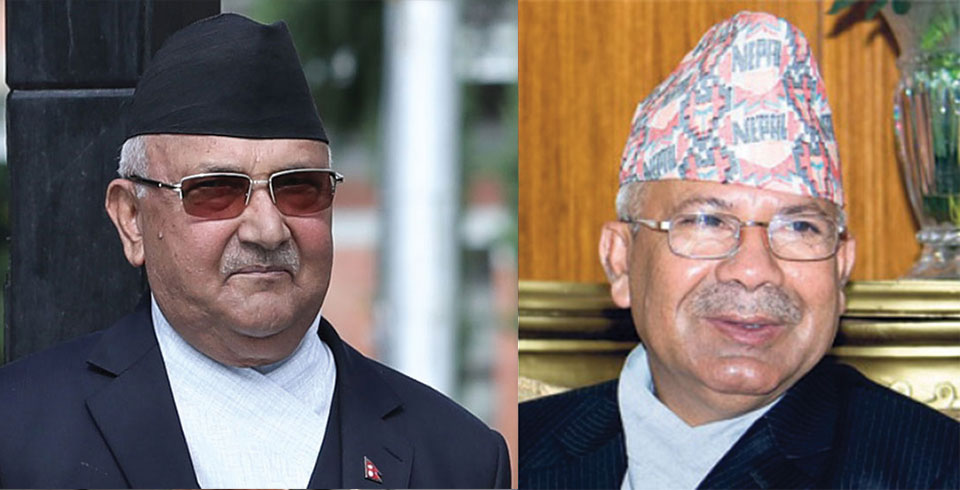













_20181220002902_20200228135058(1)_20210219190114.jpg)








































































































































